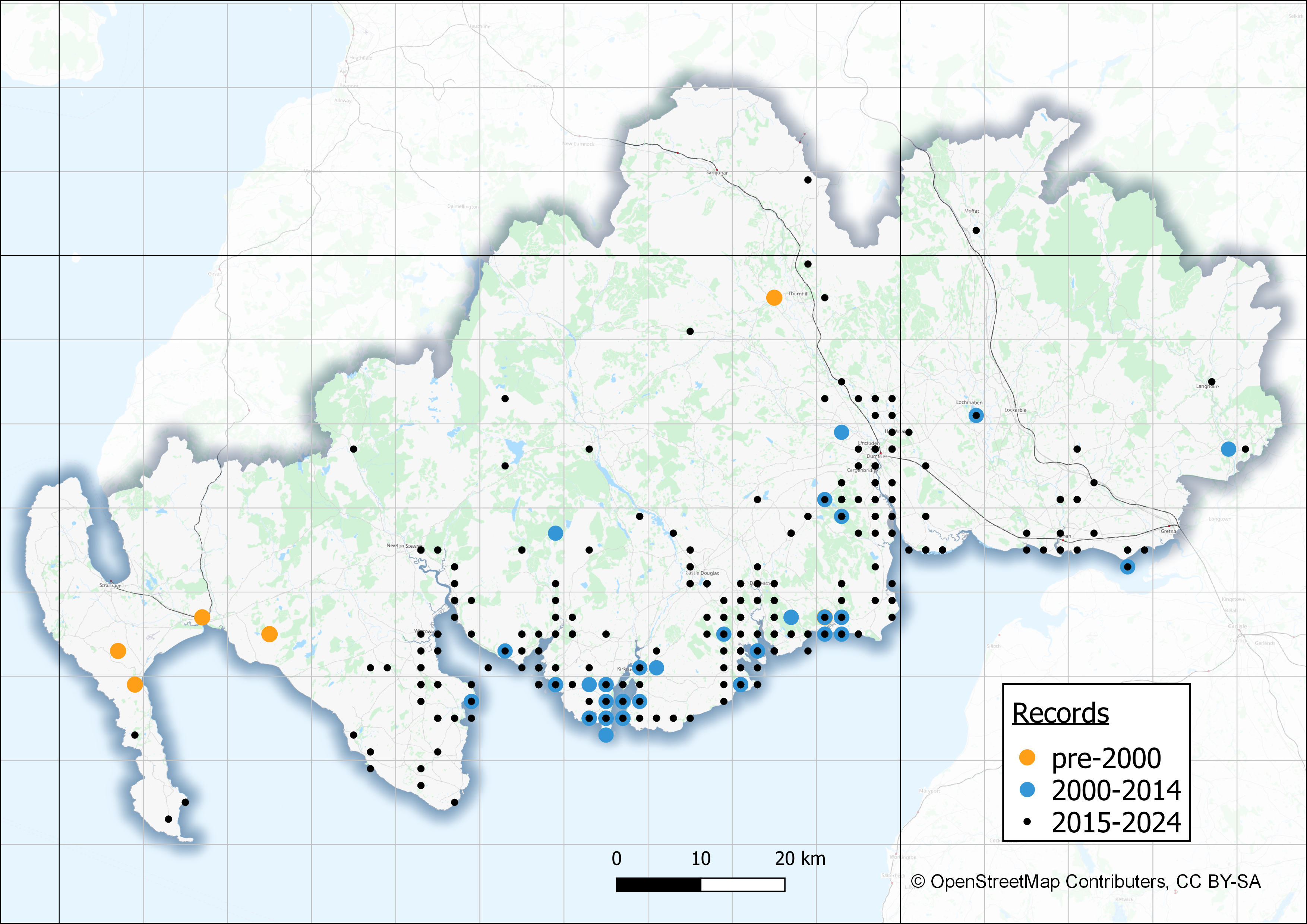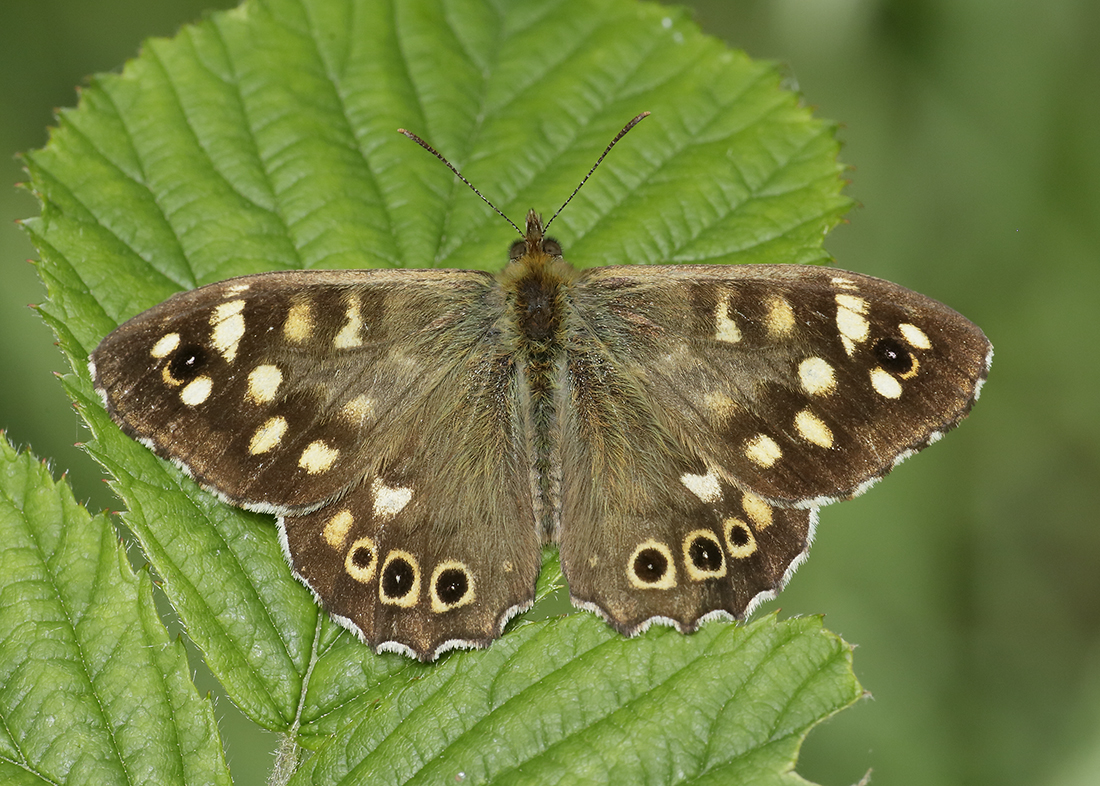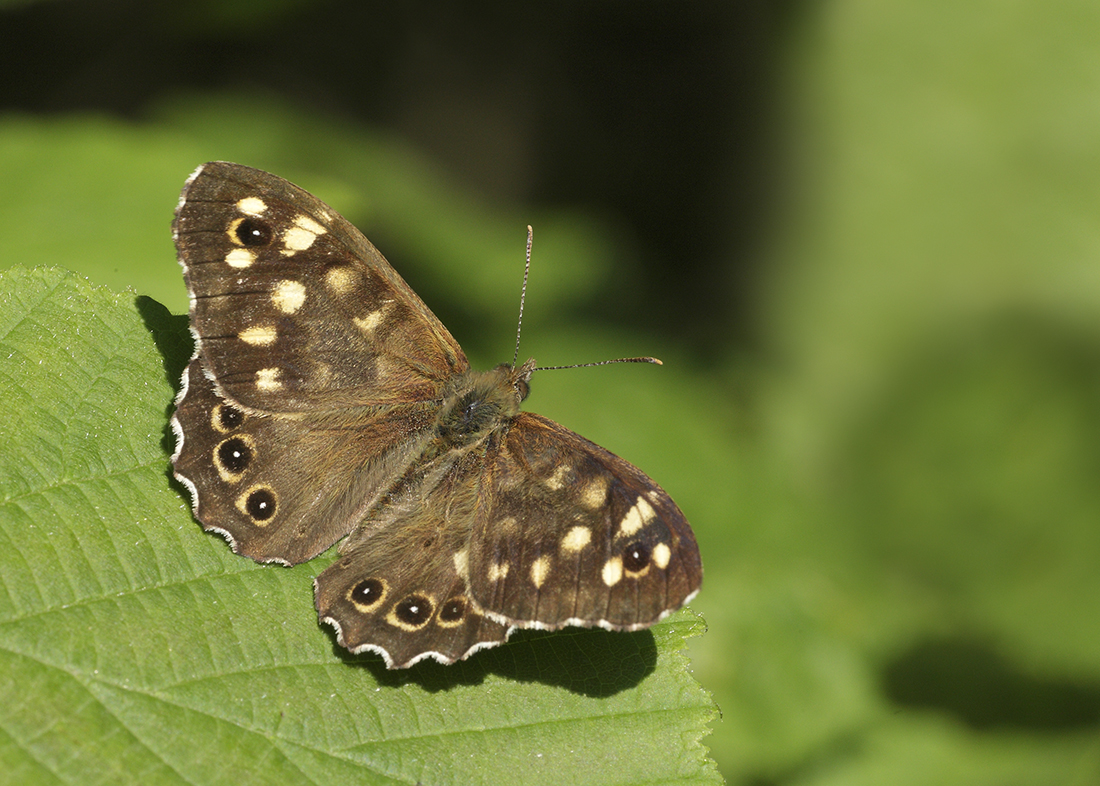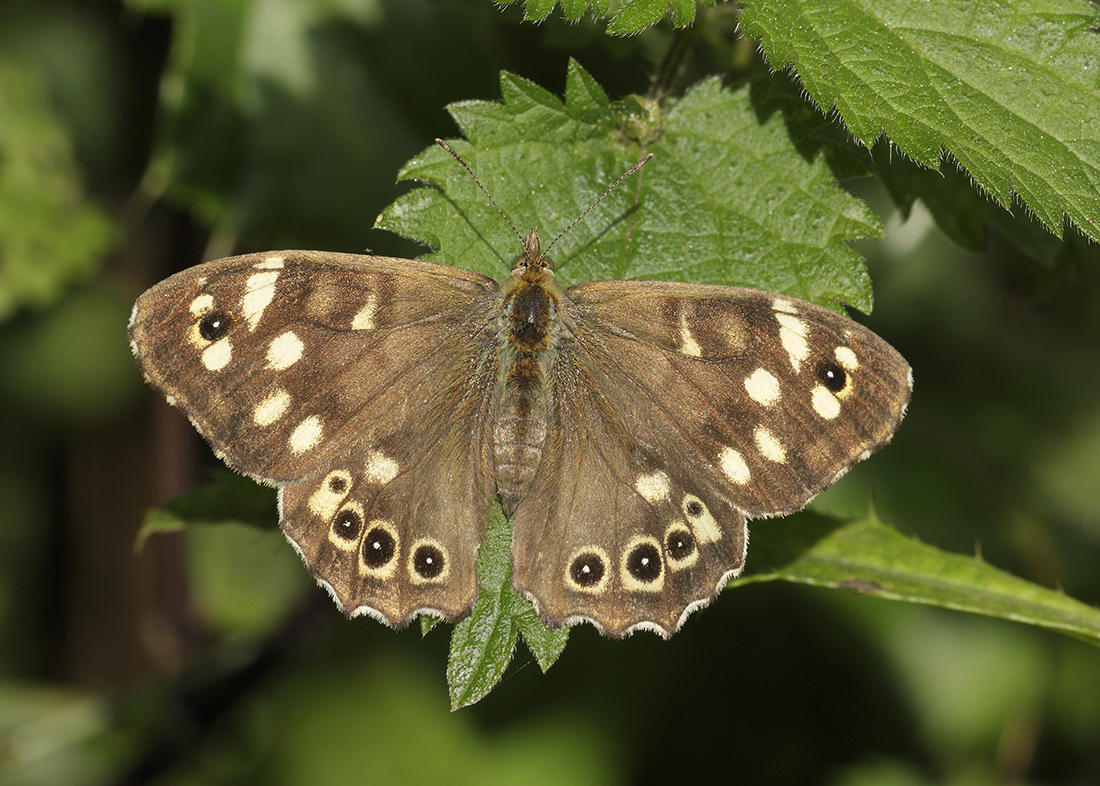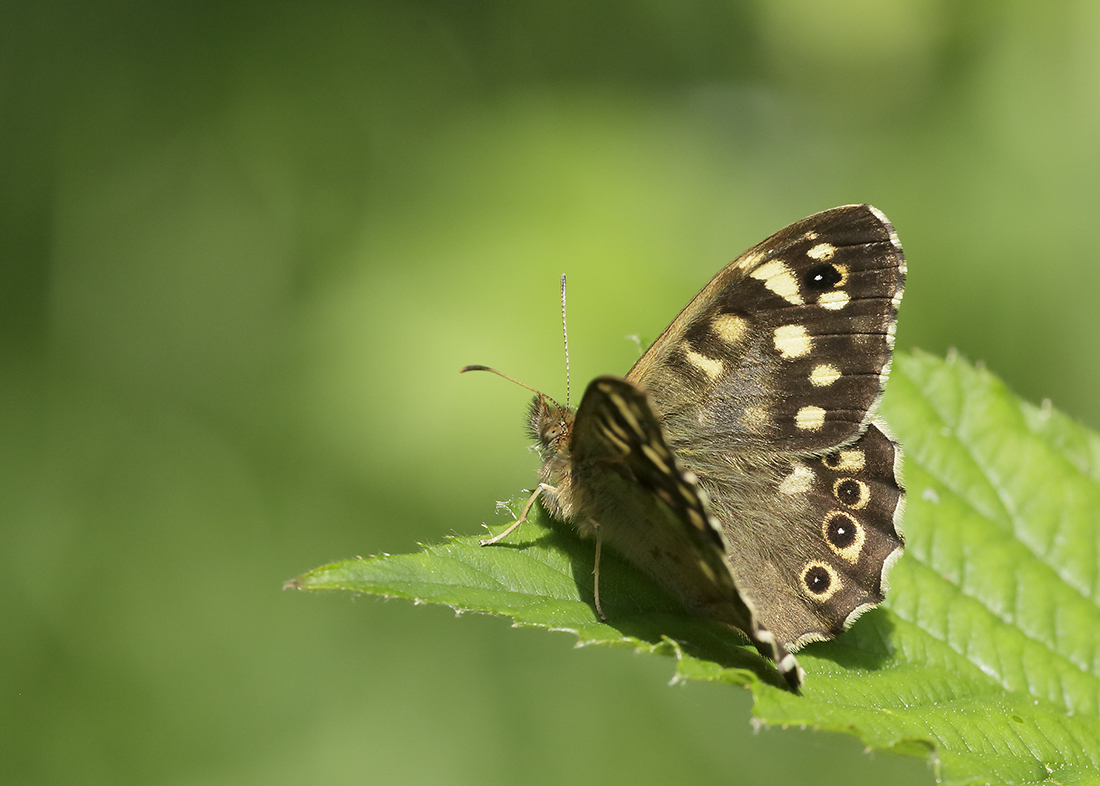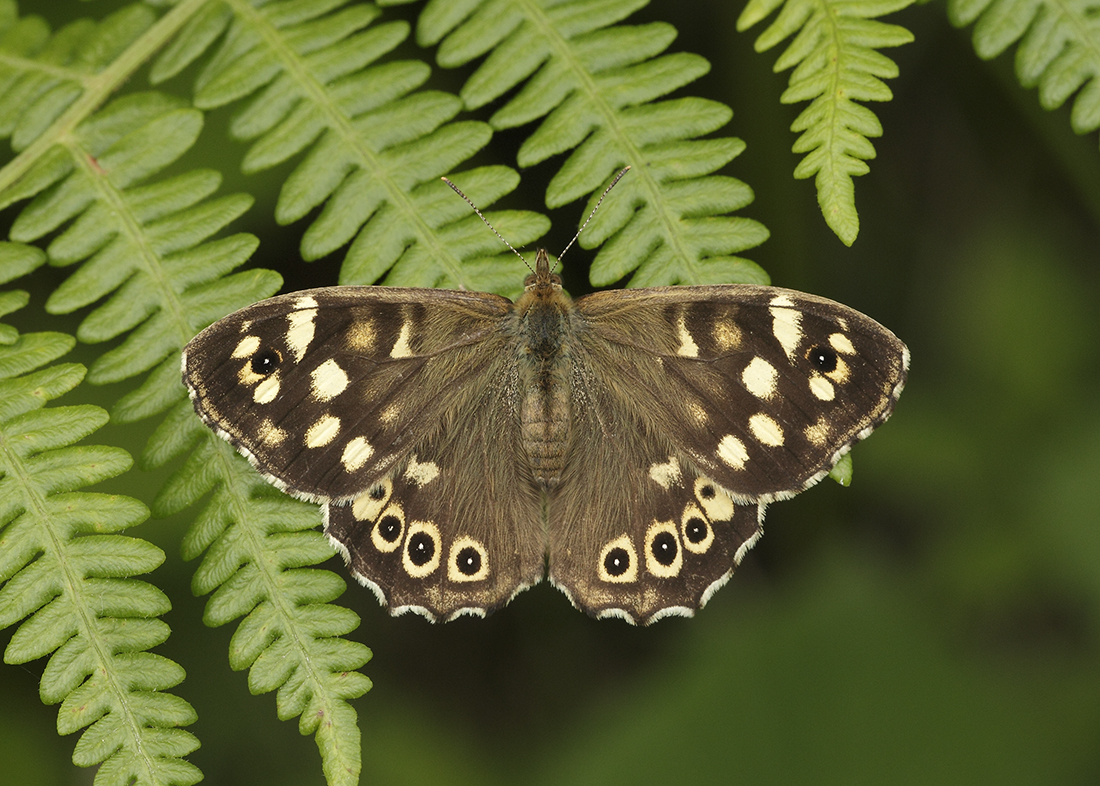In the early 19th century the Speckled Wood was thought to be widespread in Scotland, but a retreat set in during the latter part of that century, reaching its nadir in the 1920s when the fortunes of the butterfly started to improve and the downward trend was reversed.
The Speckled Wood did not disappear from Scotland completely, and colonies persisted around the Moray Firth and on the west coast in Argyll and Lochaber. These Scottish survivors tend to be larger and paler than their counterparts further south and have been termed ‘oblita’, compared to the darker and smaller ‘tircis’ form, characteristic of the rest of the British Isles.
The ‘tircis’ form is now well established in the southern parts of Dumfries and Galloway, having spread along the north Solway coastline from Cumbria, and possibly also from Northern Ireland, but is still absent from much apparently suitable habitat.
Identification
Speckled Wood is a very apt name for this butterfly with its mottled chocolate and cream appearance and its association with woodlands lit with dappled sunshine. The colour and pattern of the wings can vary, the browns often being darker in the summer brood, and the cream-coloured patches can be very pale in the spring.
Life cycle & flight period
The Speckled Wood has two or even three generations a year, and so adults can be seen from early May through to early October. The numbers peak in May and late July/early August. Overwinters as both pupae and caterpillars.
Larval foodplant
Various grasses, for example Cock’s-foot and Wood False-brome.
Habitats
The classic place to see Speckled Woods is in lowland woods where sunlight breaks through gaps in the canopy to produce transient hotspots. These favoured places are vigorously defended by the males which perch and bask in pools of light ready to rapidly launch themselves at any intruding rival, or to intercept passing females.
The Speckled Wood can survive in other habitats so long as they provide shelter and some protection from the hot sun, and it can breed successfully in shady gardens, parks and even grassland that has plenty of scrub, for example along the coast.

